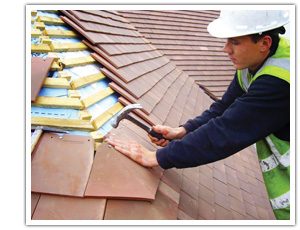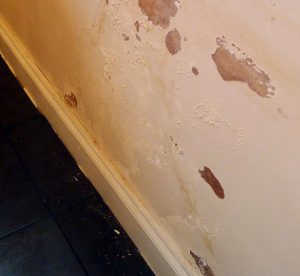Refurbishment - Waterproofing Problems
There are many types of waterproofing problems you may encounter with your house. In most instances, these problems are quite serious and should be treated immediately. If it is not fixed immediately, chances are you might need to spend even more to hire someone to correct the past mistakes as well as replace spoilt furniture due to water leakages. In this highly skilled area of specialty, look no further than our best waterproofing consultants in Malaysia.
Some of the waterproofing problems you may face in your house are as follows:
Roofs with exposed waterproofing membranes
Single layer or double layer bonded refurbishing can be applied to an old cover layer, flattened and bonded, which is still in good condition but close to the end of its life. In the case of old waterproofing, it is still effective with widespread surface cracks which do not affect the thickness of the cover layer but are perfectly flat, dry and without signs of tension, one can use single-layer refurbishing, either flame-bonded or applied cold with MASTIPOL adhesive.
Complex geometry roofs
Refurbishing on complex geometry roofs can be done using black bituminous membrane with IDROLASTIK, which is a ready-to-use thixotropic fluid paste, composed of a bituminous emulsion enriched with selected resins which make the film, once dry, highly elastic and waterproof. The product is very adhesive, highly resistant to the action of many dilute acids, water and the majority of saline solutions. The dried IDROLASTIK film forms a flexible black coating which is thermal shock resistant and neither drips at high temperatures nor cracks at low ones.
 Under-tile waterproofing of old roofs
Under-tile waterproofing of old roofs
Problems of tile roofs often occurs that the pitch of the roof is inadequate for the type of tile employed, and when the materials are not perfect they may be very permeable to water. Poor performance may also depend on:
– improper installation of the support (for instance, inexact spacing of the supporting slats, insufficiently regular or flat laying surface, shallow slope of the roof, etc.);
– improper laying of the products (such as insufficient overlap in relation to the slope of the roof);
– dimensional defects (such as excessive tolerances, poorly finished joints, etc.).
Walking on the roof, especially on wet cement, if one of the most frequent causes of breakage and hence infiltration (for instance, when a clumsy TV antenna technician is working on the roof). Tiles which, due to their very nature, may have air bubbles trapped inside them, may flake and decay. The humidity that enters such defects creates condensation, and when it freezes expands and makes the tiles explode. Very strong winds may force water in through existing cracks to a greater or lesser extent.
If the rain is very persistent, a constant layer of water may build up at the overlaps between the tiles, thus creating communicating water vessels. If the tiles are well fitted together along the overlaps, water may rise due to capillary action. Infiltration due to suction, this is particularly accentuated by the condition of the ceiling such as openings at the sides of the roof space, ventilation ports, etc. which increase the likely of under pressure in the interior.
For under-tile waterproofing of the old roofs, you can apply continuous waterproofing layer under the tiles to protect against water.
- Heavy duty welded under-tile membranes.
- Long lasting under-tile protection
Hence, that is why it is best to engage with the best waterproofing consultants which can offer.
Among the various causes of deterioration, it is of the utmost importance to examine the various forms of dampness.
Before starting any kind of work on these structures, it is advisable to ascertain the nature of the cause of dampness and the extent of dampness contained in the walls, as the methods of dealing with it can be very different case to case basis and the type of damp present. We classify a wall as:
- dry if it has a moisture content of between 3% and 5% (normal moisture)
- damp if it contains between 5% and 10%
- wet if the moisture level exceeds 10%
To ensure that the work will have good results, it is also necessary to analyse the composition of the structure and establish what salts it contains and in what quantum. The next point to consider is the choice of dehumidifying systems, which must be assessed. This is very important as a wrong choice can drastically affect the final result.
Dehumidification and rehabilitation is almost always carried out with a system based on the application of various rehabilitation treatment “made-to-measure” for the particular building.
You may also be interested in Waterproofing Product, Waterproofing Membrane, Thermal Insulation, or call +60166687266 for more info and services!


